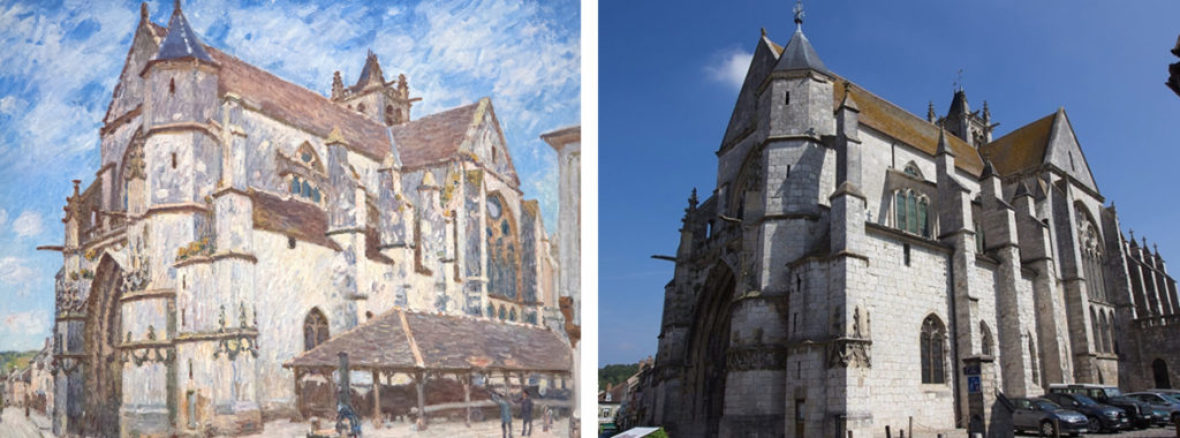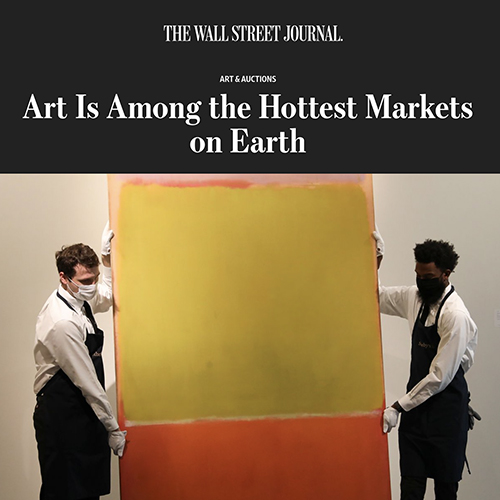La série des cathédrales de Rouen de Monet compte parmi les réalisations les plus célèbres de l'histoire de l'art. Plus de trois ans après sa création au début du mois de février 1892, vingt des trente toiles de Monet représentant des cathédrales ont été exposées à la galerie Durand-Ruel, et l'exposition a été considérée comme un triomphe par tous ceux qui y ont assisté en mai 1895. Parmi les peintres, Camille Pissarro a écrit qu'il "était transporté par leur extraordinaire habileté". Cezanne, que [Pissarro] a rencontré hier chez Durand-Ruel, est tout à fait d'accord... c'est l'œuvre d'un artiste équilibré mais impulsif qui poursuit les nuances intangibles des effets réalisés par aucun autre peintre." (Camille Pissarro à son fils, Lucien, 26 mai 1895)
Cependant, Monet n'était pas aussi confiant lorsqu'il a poursuivi cette entreprise en avril 1892. Connu pour ses sautes d'humeur habituelles, Monet est retourné à Giverny avec le premier lot de toiles de cathédrales et craignait que le fait de pousser la lumière et son effet sur les formes au-delà de toutes les prévisions précédentes ne soit un excès. Mais lorsqu'il a dévoilé les tableaux aux visiteurs, ceux-ci ont réagi avec un étonnement stupéfiant, et la confiance de Monet s'est accrue. L'éloge effusif du peintre américain Theodore Robinson correspond à la réaction stupéfaite que d'autres ont éprouvée en voyant ces chefs-d'œuvre : "Ils sont tout simplement colossaux. Jamais, je crois, une architecture n'a été peinte de la sorte, l'impression la plus étonnante de la chose, un sentiment de grandeur et de décadence... pas une ligne nulle part - et pourtant il y a une merveilleuse impression de construction et de solidité. N'est-ce pas curieux, un homme qui prend un tel matériau et en fait un usage aussi magnifique ?" (Robinson à J. Alden Weir, mai 1892)
Alfred Sisley aurait-il pu faire partie des premiers intervenants de la cathédrale? Certainement. Monet et lui étaient les amis les plus proches. Si Sisley était un homme discret et privé qui a laissé peu de traces biographiques, il était également une ressource de grande confiance et un artiste que Monet respectait énormément. En fait, des témoignages de première main de Sisley et des cohortes de Monet confirment le lien entre les deux séries. Le 21 septembre 1893, Julie Manet (alors adolescente, fille de Berthe Morisot et d'Eugène, le frère d'Edouard Manet) écrit dans son journal : "Après une matinée pluvieuse, le jour s'est éclairci et nous sommes allés à Moret... Nous avons vu Sisley". Son fils, l'historien de l'art Denis Rouart, a confirmé l'inscription en précisant que "Berthe et sa fille... sont allées avec les Mallarmé à Moret où Sisley peignait une série d'églises - inspirée, du moins Mallarmé le pensait-il, par la série des Cathédrales de Monet". (Denis Rouart, Paris, 1950)
Alfred Sisley s'était installé à Moret-sur-Loing en novembre 1889, un village au charme inégalé entre l'île-de-France et la Bourgogne, à la lisière de la forêt de Fontainebleau. Parmi ses plus beaux atouts, l'imposante église de la Norte-Dame, de style gothique, domine l'horizon depuis la rivière. Depuis le modeste jardin de Sisley, le clocher de l'église était un élément omniprésent de la ligne d'horizon.
Contrairement à Monet, dont les trente vues du portique ouest de la cathédrale de Rouen ont été exécutées exclusivement dans le but d'examiner les jeux d'ombre et de lumière sur la façade de l'édifice, Sisley a cherché à affirmer la nature permanente de l'église sous les changements variables de lumière et d'atmosphère capturés dans ses tableaux. Parmi les impressionnistes, c'est lui qui s'est le plus consacré au travail en plein air, sans se retirer dans un studio pour des modifications ou des retouches. Le calme et l'intimité de Sisley lui ont permis de travailler sur ses cathédrales comme il l'a toujours fait, alla prima et exclusivement en plein air pour montrer l'apparence changeante d'un motif à travers une série de changements atmosphériques. Le fait qu'il ait donné à ses œuvres des titres tels que "Sous le soleil", "Sous le givre" et "Sous la pluie" et qu'il les ait exposées en groupe au Salon du Champ-de-Mars en 1894 suggère qu'il les considérait également comme des interprétations en série.
Sisley était souvent cité pour sa douce intégrité et sa capacité à rendre la vérité de l'atmosphère et du ton, mais il était également capable de produire des compositions puissamment structurées et excellait dans la représentation de scènes sous des angles inhabituels qui dynamisaient ses compositions. Il n'est pas surprenant que L'Église de Moret, le Soir fournisse un excellent exemple de la façon dont Sisley a réglé son chevalet de manière très avantageuse. Sa ligne de vue est légèrement inclinée vers le haut, mais résolument dirigée vers l'angle sud-ouest du portique. Ce faisceau de colonnes souligne la poussée imposante et ascendante du motif de l'église. Mais le véritable art ici est qu'il fonctionne comme le centre à partir duquel deux forces de tension s'éloignent l'une de l'autre et, étonnamment, avec une force proportionnelle. L'éclat de ce tableau réside dans l'effet dramatique d'une perspective plongeante créée par la rue étroite (rue de l'Église) à gauche et l'opposition floue fournit une structure en pierre d'un poids et d'une masse inimaginables ; ces deux aspects sont des aspects planaires qui démontrent magnifiquement des perspectives décroissantes en trois points parfaitement dessinées.
Parmi la douzaine d'huiles connues que Sisley a peintes de l'église de Moret, L'Église de Moret, le Soir n'est pas seulement d'une taille généreuse, elle figure également parmi les plus grandes peintures de toute son œuvre. L'échelle de cette œuvre démontre la détermination de Sisley à créer un hommage qui respecte pleinement les architectes et les bâtisseurs d'une structure si imprenable et si résolue, qu'elle était la même lorsque Sisley l'a peinte qu'à l'époque médiévale, et qu'elle est pour nous aujourd'hui, comme elle le sera pour toujours.
demanderDétail de l'art
ALFRED SISLEY (1839-1899)
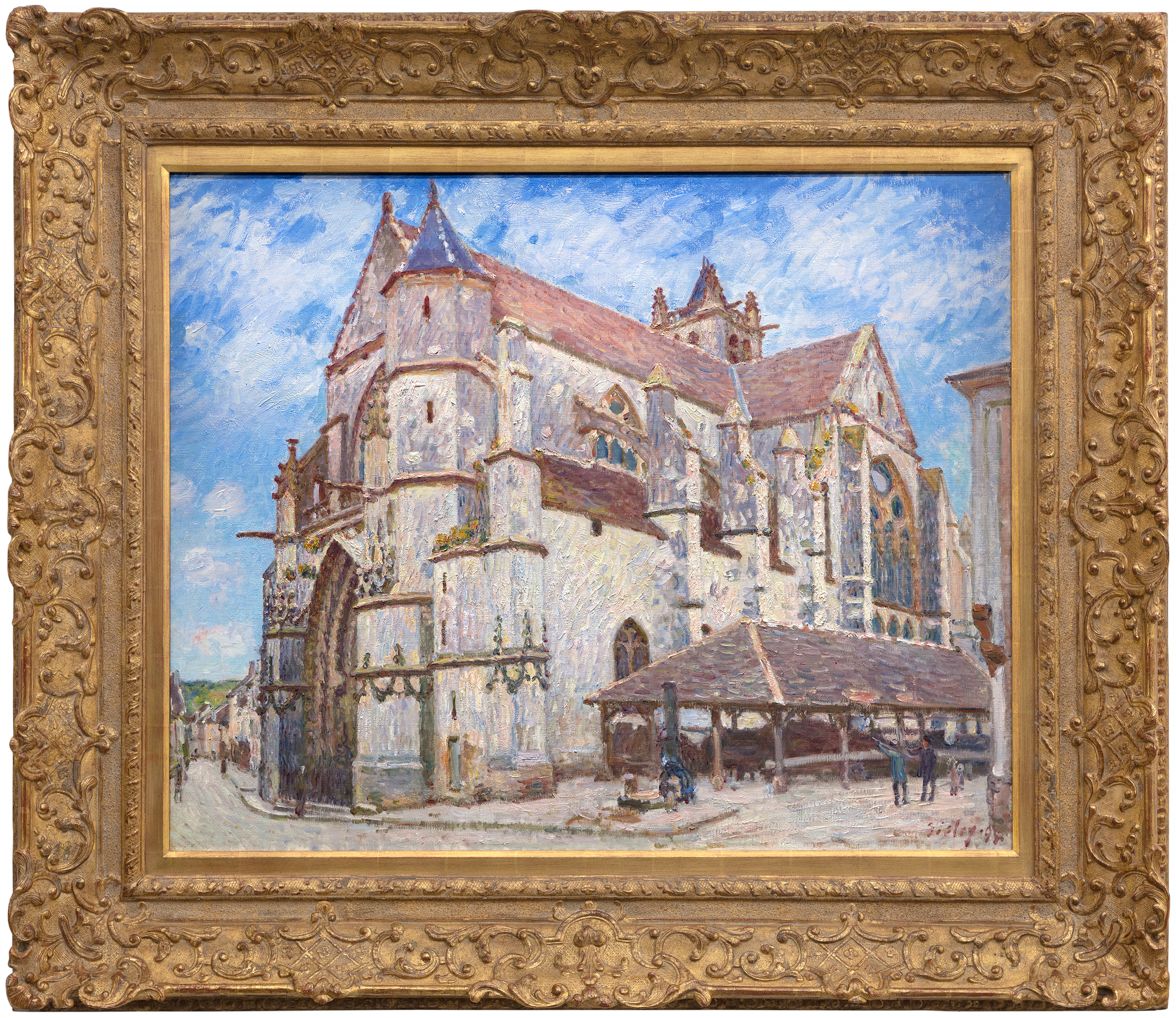
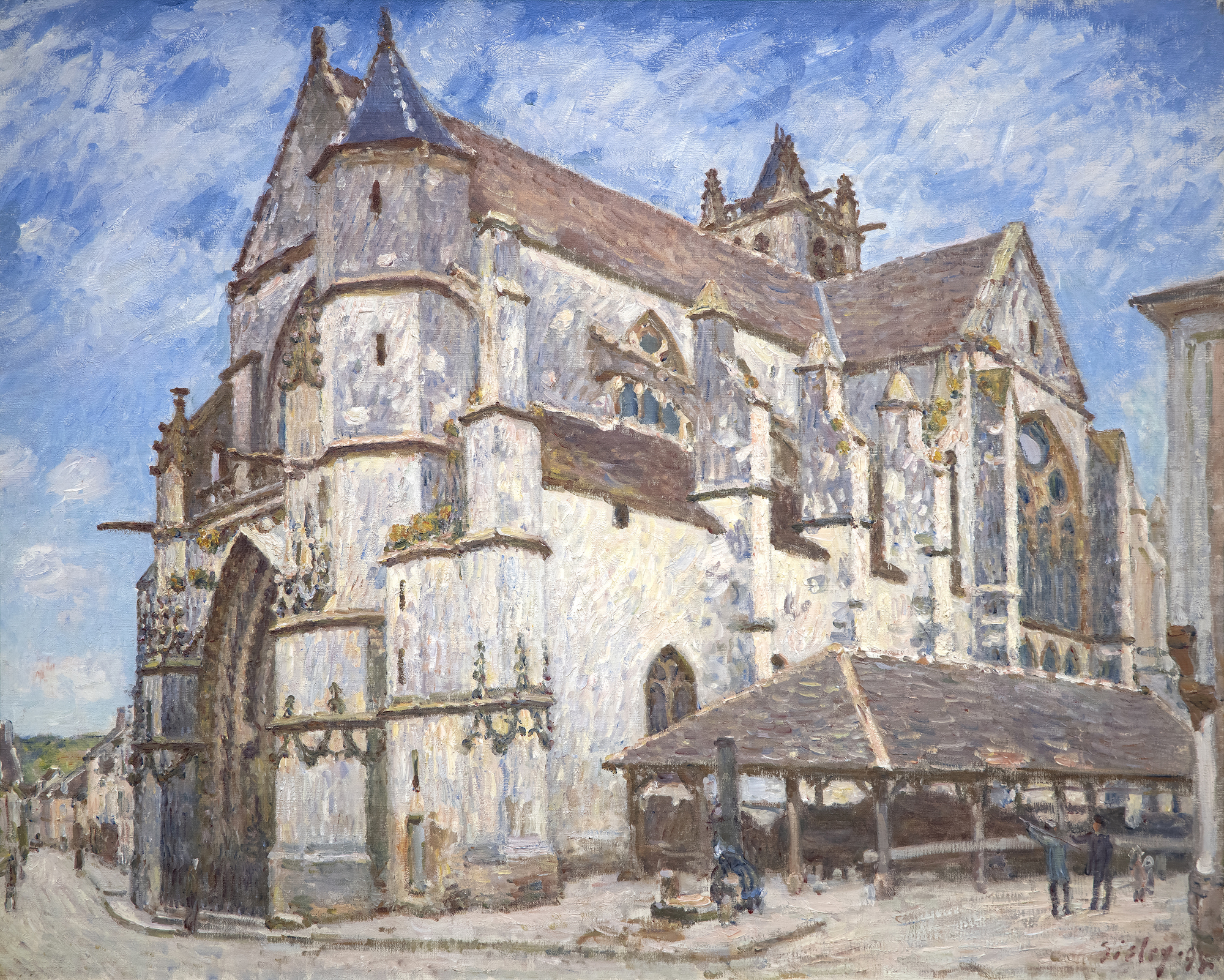
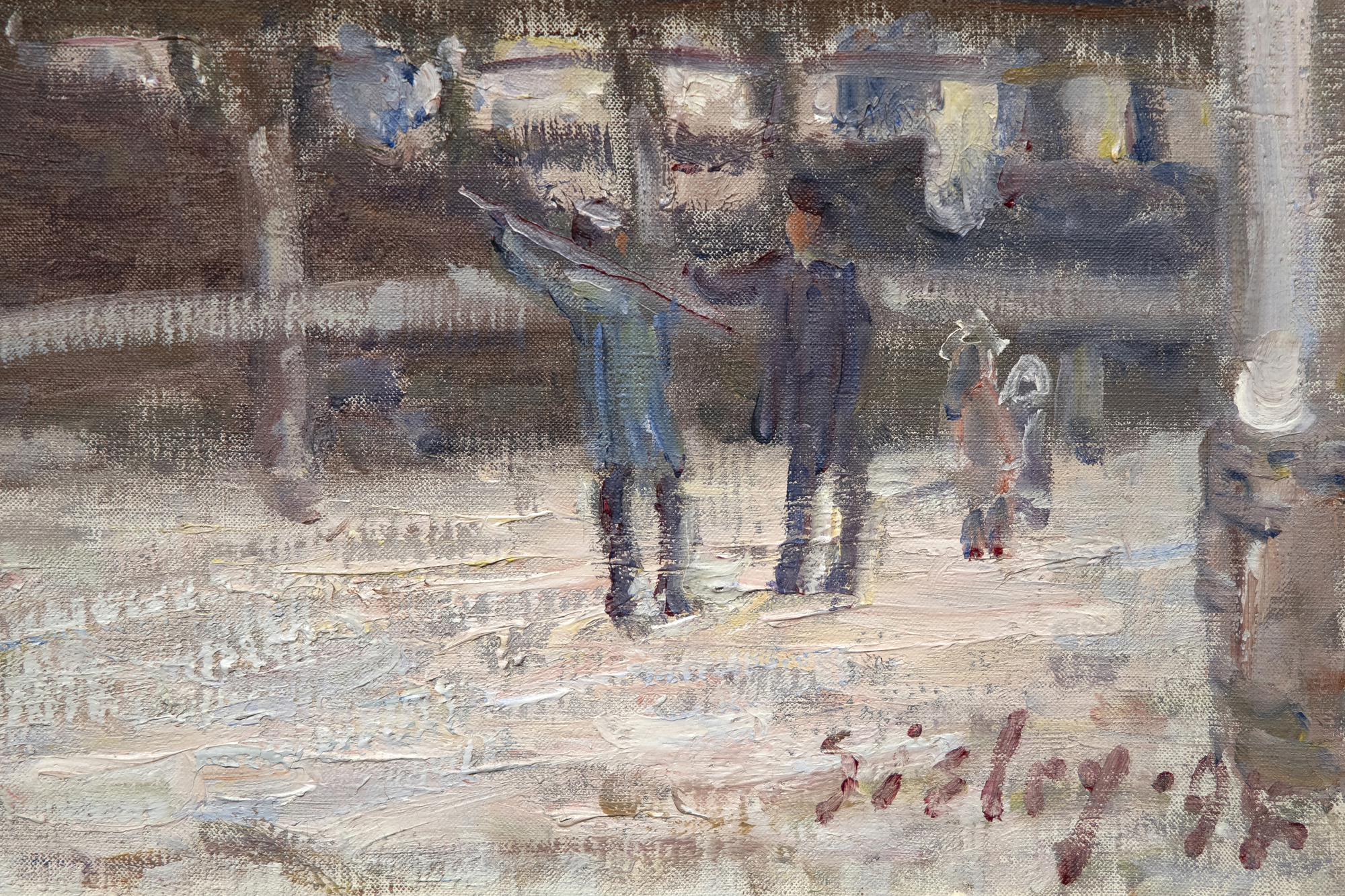
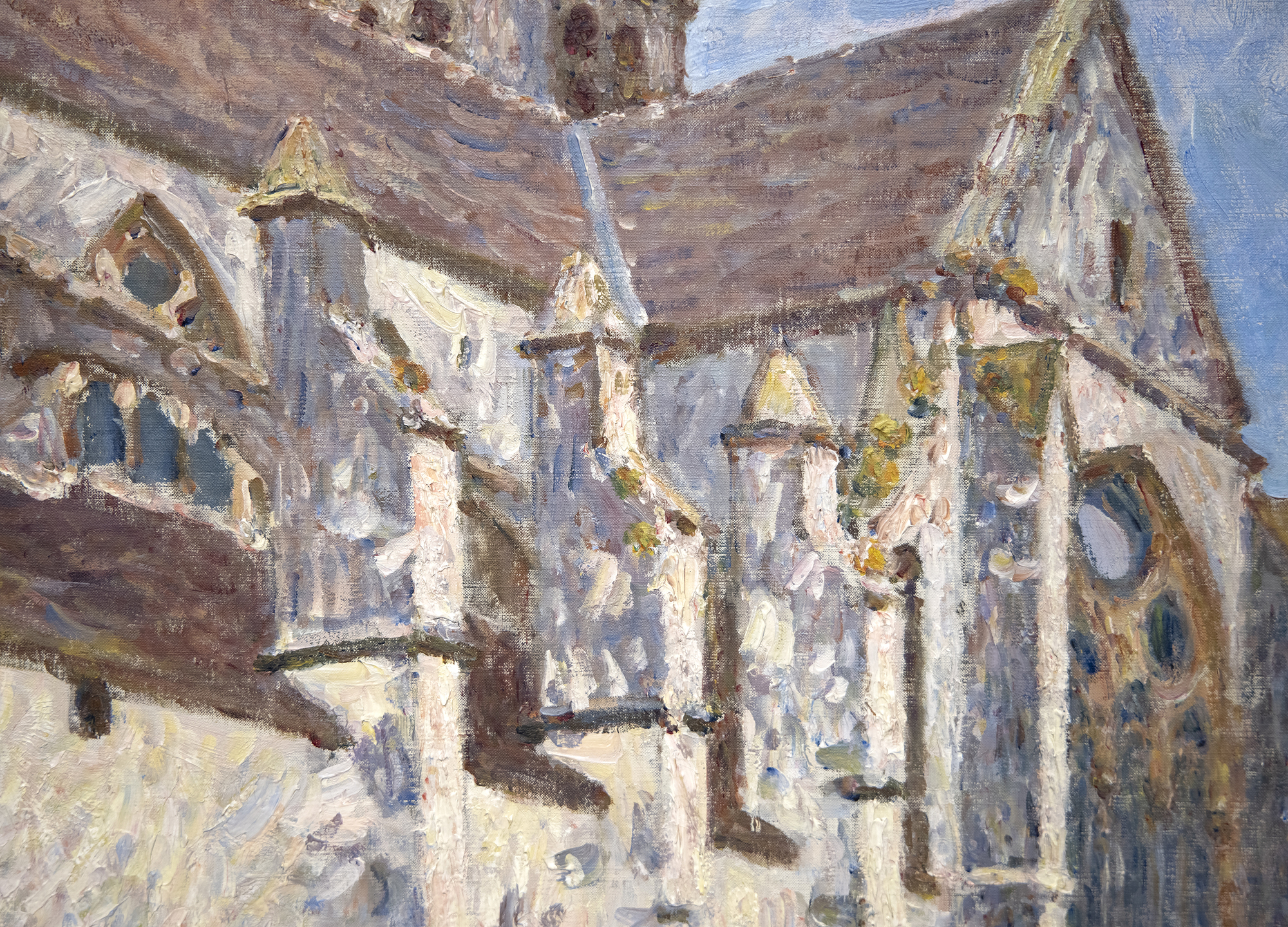
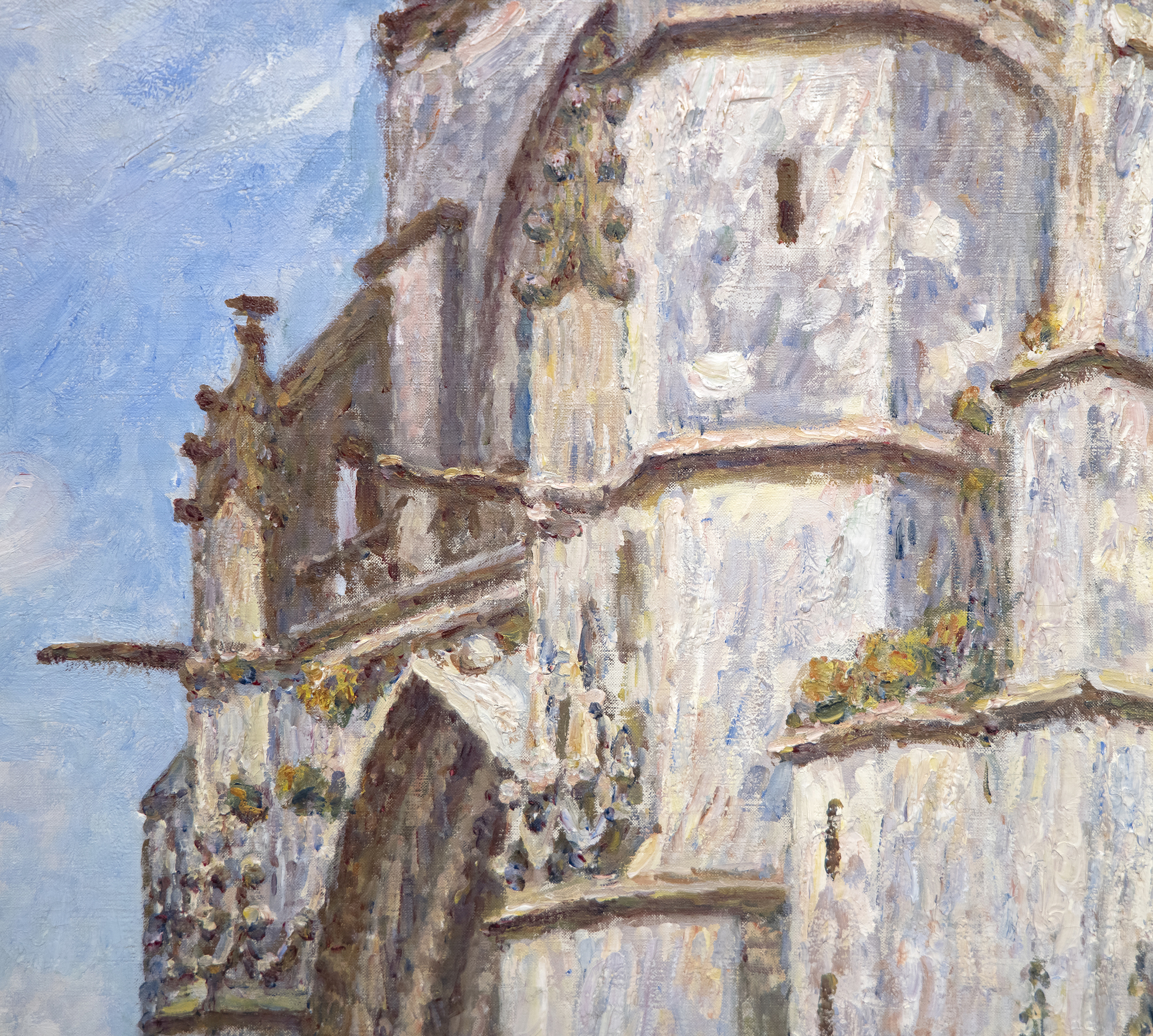
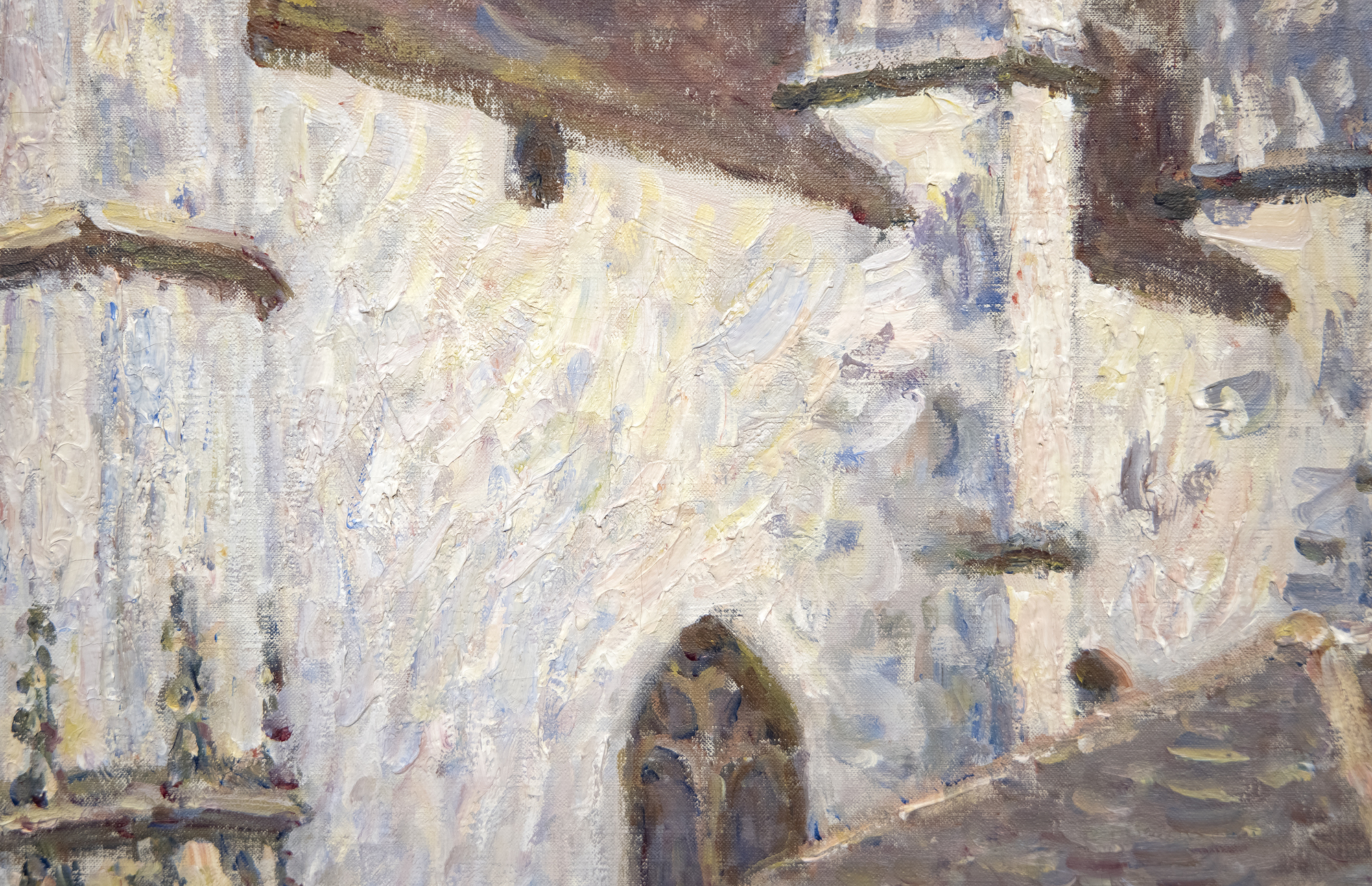
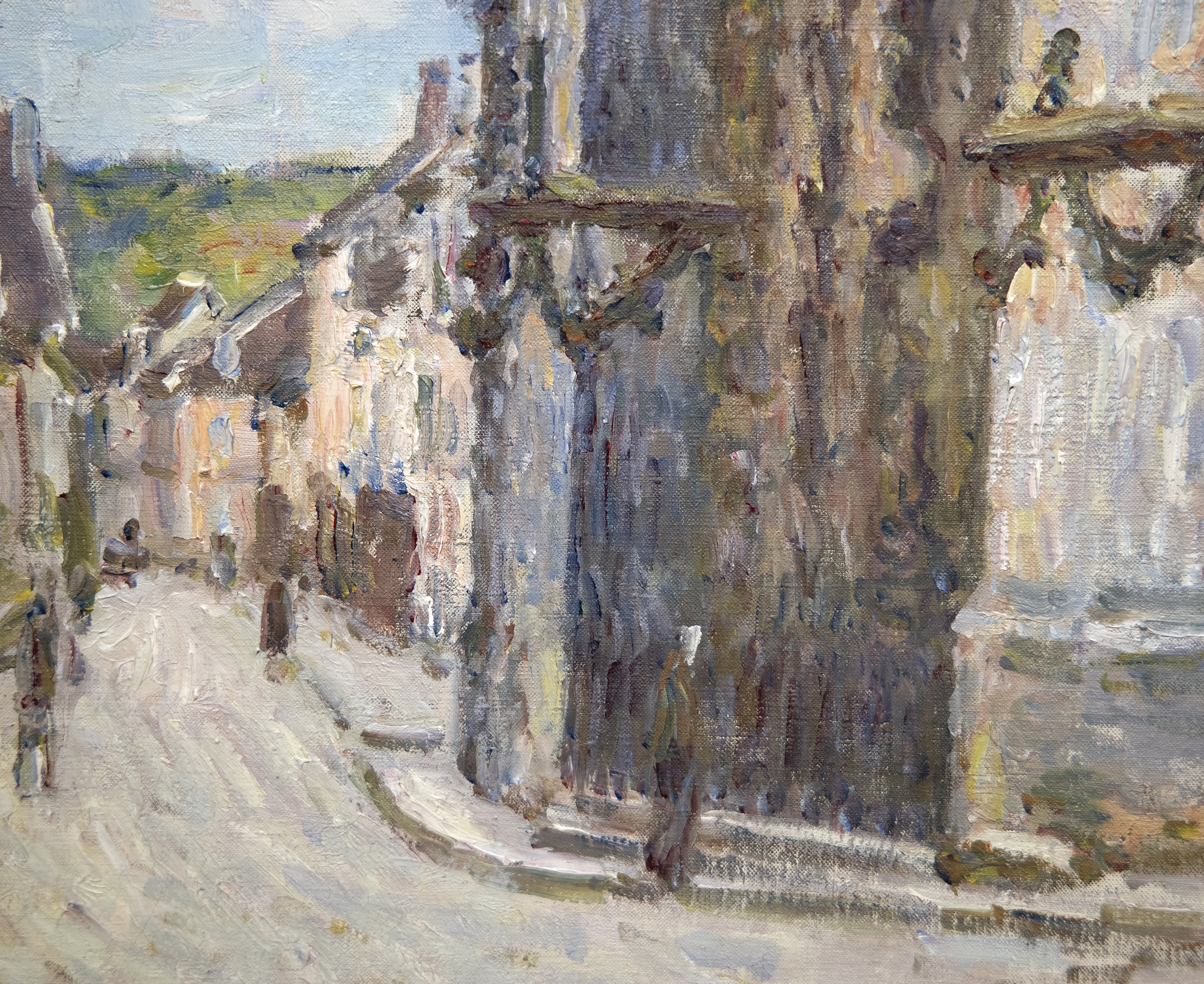
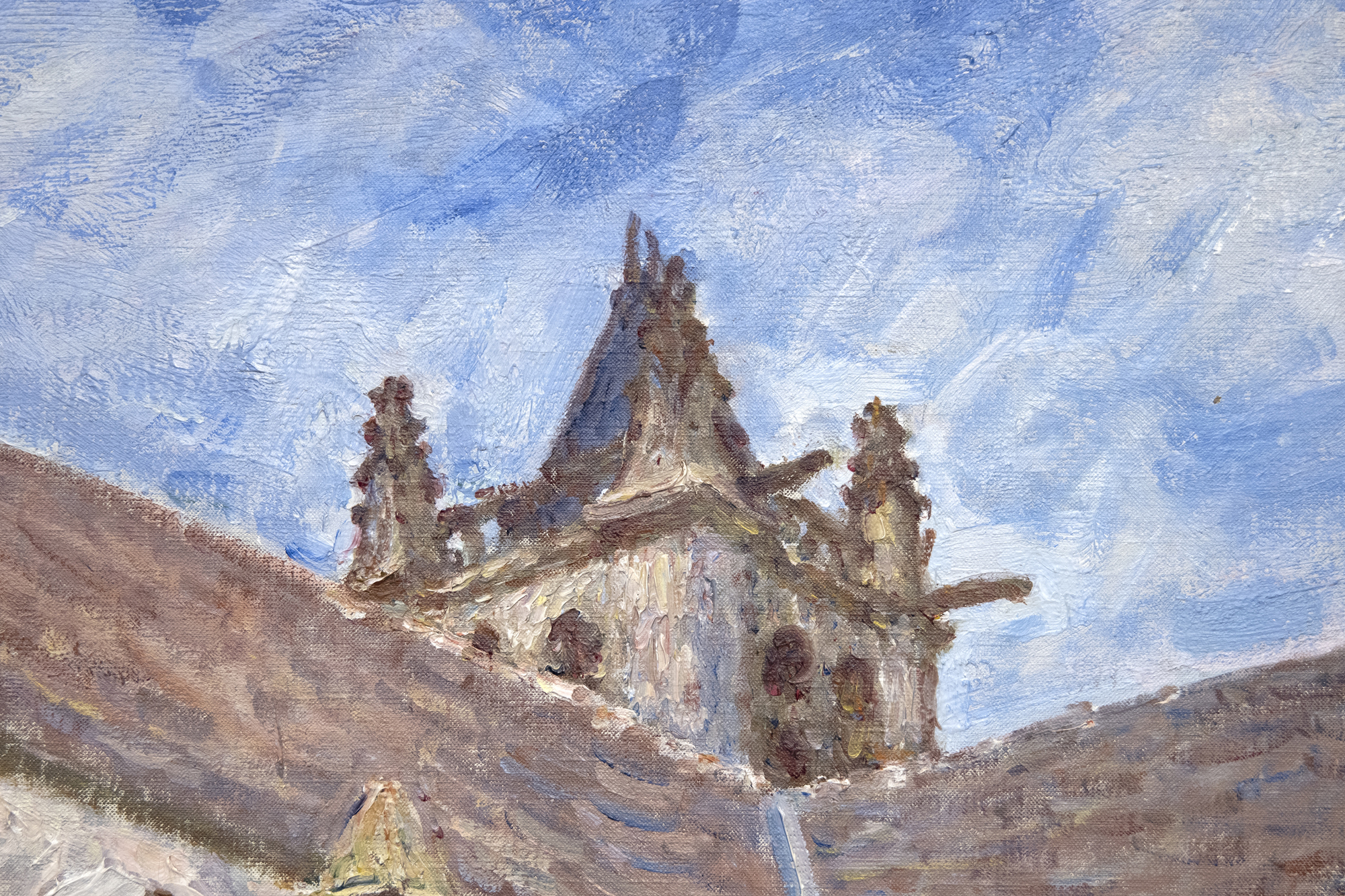
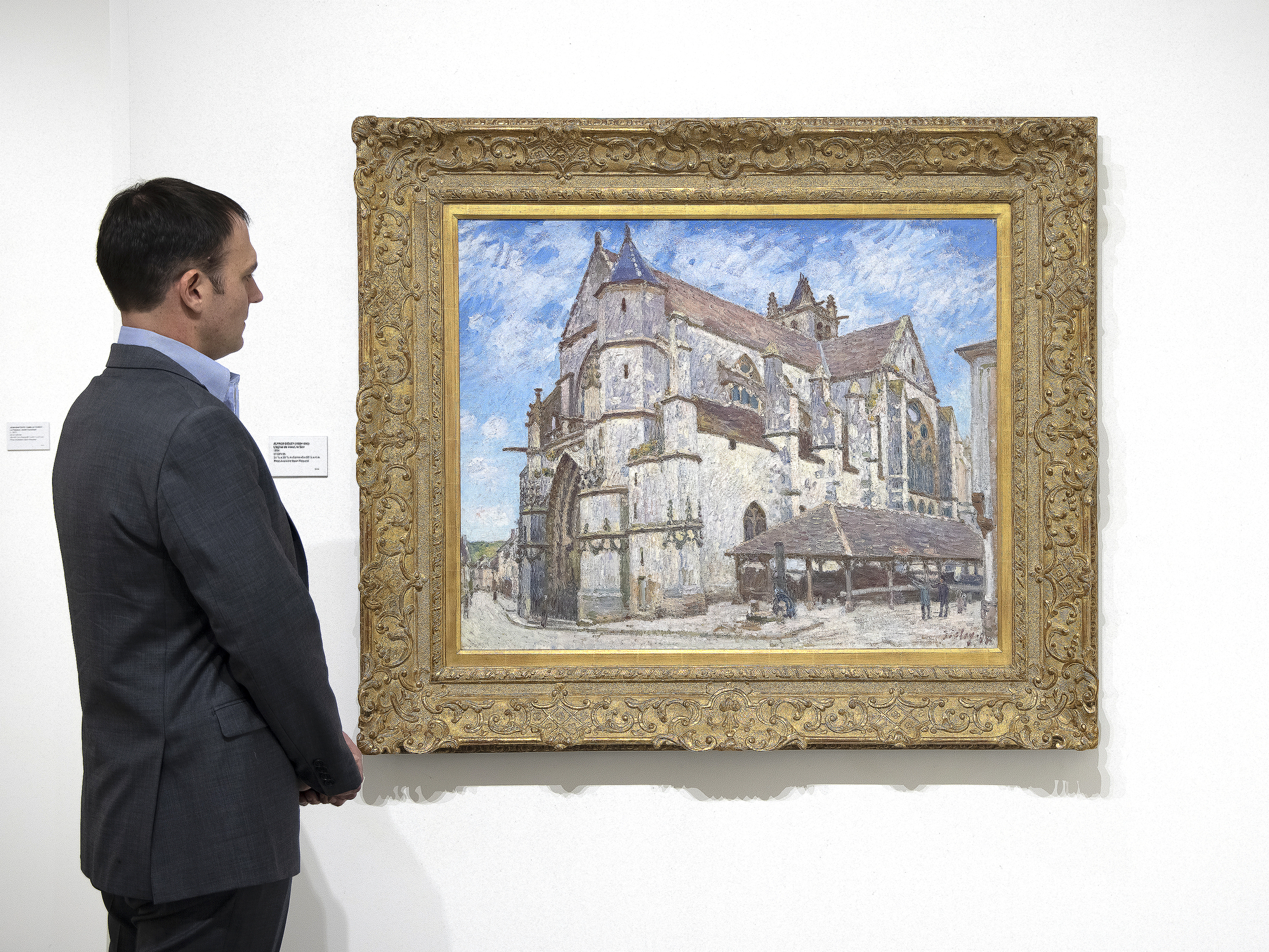
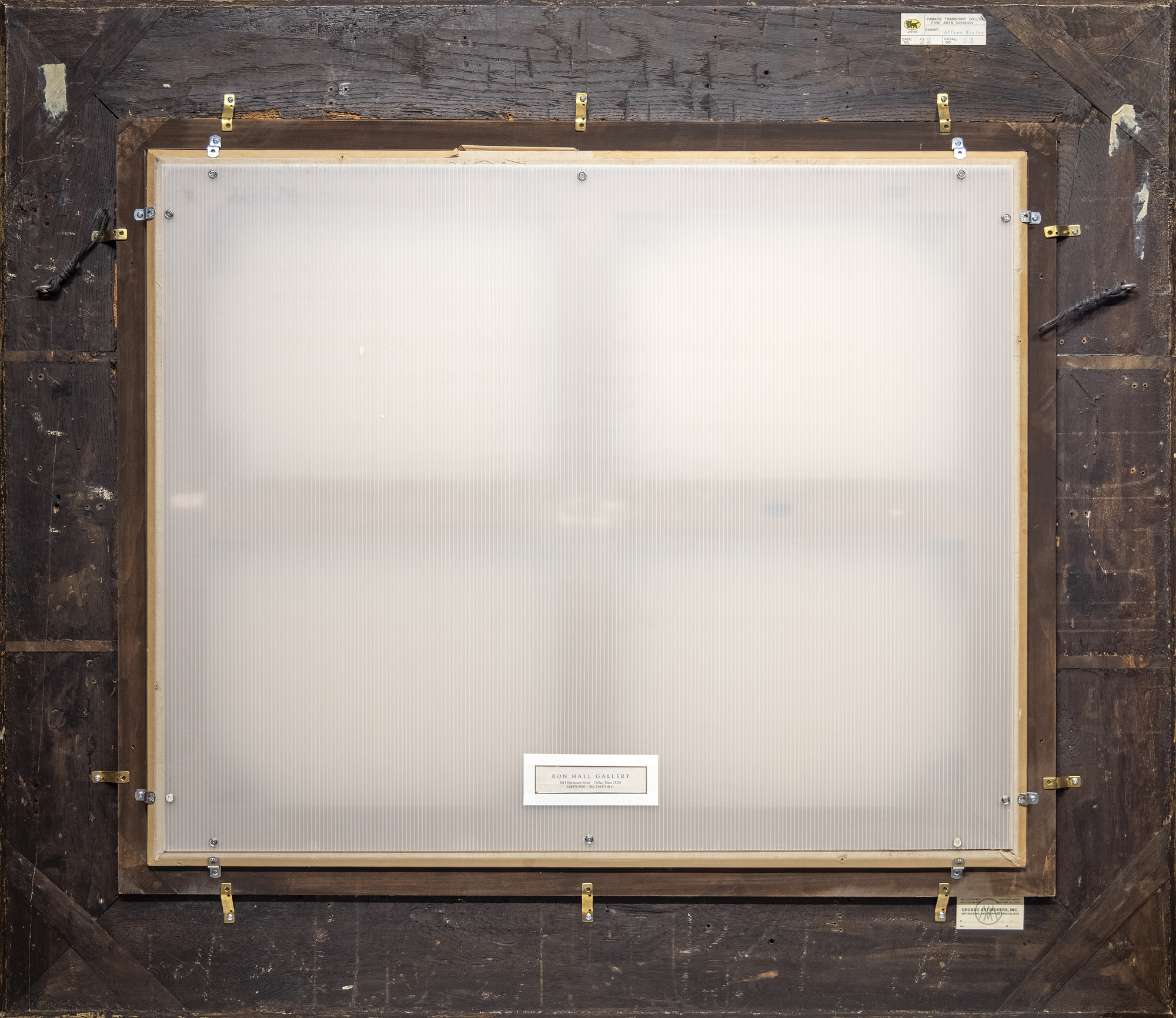
Provenance
Domaine SisleyVente : Vente de l'Atelier Sisley, Galeries Georges Petit Paris, 1er mai 1899, lot 13
George Viau, Paris
Vente : Hôtel Drouot Paris, 20 février 1908, lot 37
Collection Pearson, Paris (acquise lors de la vente ci-dessus)
Vente : Vente Pearson, Galerie Paul Cassirer Berlin, 18 octobre 1927, lot 65
Collection privée
Vente : Hôtel Drouot, Paris, 23 juin 1928, lot 98
Collection Aubert, Paris (acheté à la vente ci-dessus ; peut-être Marcel Aubert)
Collection privée Galerie Edward Nahem
S...Plus.....teven Bedowitz, Boca Raton, Floride (acquis en 1989)
Collection particulière, New York
Larry Lacerte, Dallas (acquis en 1991)
Collection privée (acquise en 1996)
Exposition
Tokyo, Isetan Museum of Art ; Kagawa, Takamatsu Municipal Museum of Art ; Hiroshima, Museum of Art et Wakayama, Departmental Museum of Modern Art, Exposition Alfred Sisley, 2000, no. 53, illustré en couleur pp. 138-139Littérature
O. Reuterswaerd, 'Sisley's Cathedrals, A Study of the Church at Moret' in Gazette des Beaux Arts, March 1952, fig. 1, illustré p. 194.F. Daulte, Alfred Sisley. Catalogue raisonné de l'œuvre peint, Lausanne, 1959, n° 835, illustré en noir et blanc.
F. Daulte, Sisley. Les Saisons, Paris, 1992, no. 41, illustré en couleur p. 73
R. Shone, Sisley, New York, 1992, pl. 134, illustré en couleur p. 170 (mentionné pp. 164-165)
Brame, S., Sisley, A., Lorenceau, F., & Daulte, O. (2021). Alfred Sisley : Catalogue critique des peintures et des pastels. P. 347 ill. 347, 501
...MOINS.....
Néanmoins, Sisley s'est efforcé de montrer l'aspect changeant du motif à travers une série de changements atmosphériques. Il a donné à ses œuvres des titres tels que "Au soleil", "Sous le givre" et "Sous la pluie" et les a exposées en tant que groupe au Salon du Champ-de-Mars en 1894, des facteurs qui suggèrent qu'il les considérait comme des interprétations en série. Néanmoins, contrairement à l'œuvre de Monet, l'église de Moret, le Soir révèle que Sisley a choisi de présenter le motif dans un contexte spatial qui accentue ses attributs compositionnels - la perspective plongeante de la rue étroite à gauche, la forte récession diagonale des lignes de construction comme contrepoids à droite, et le poids imposant du bâtiment en pierre au-dessus de la ligne de vue.





